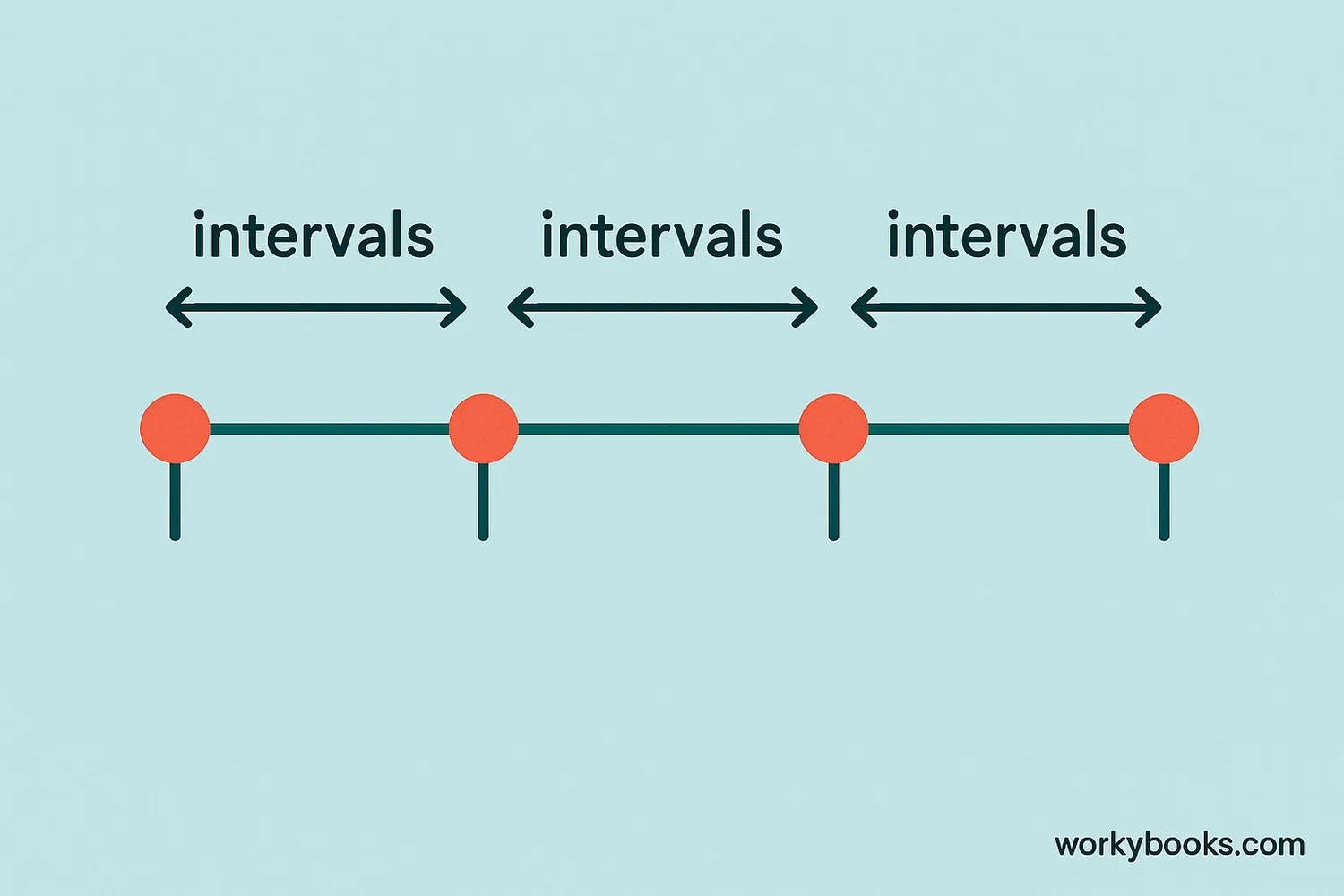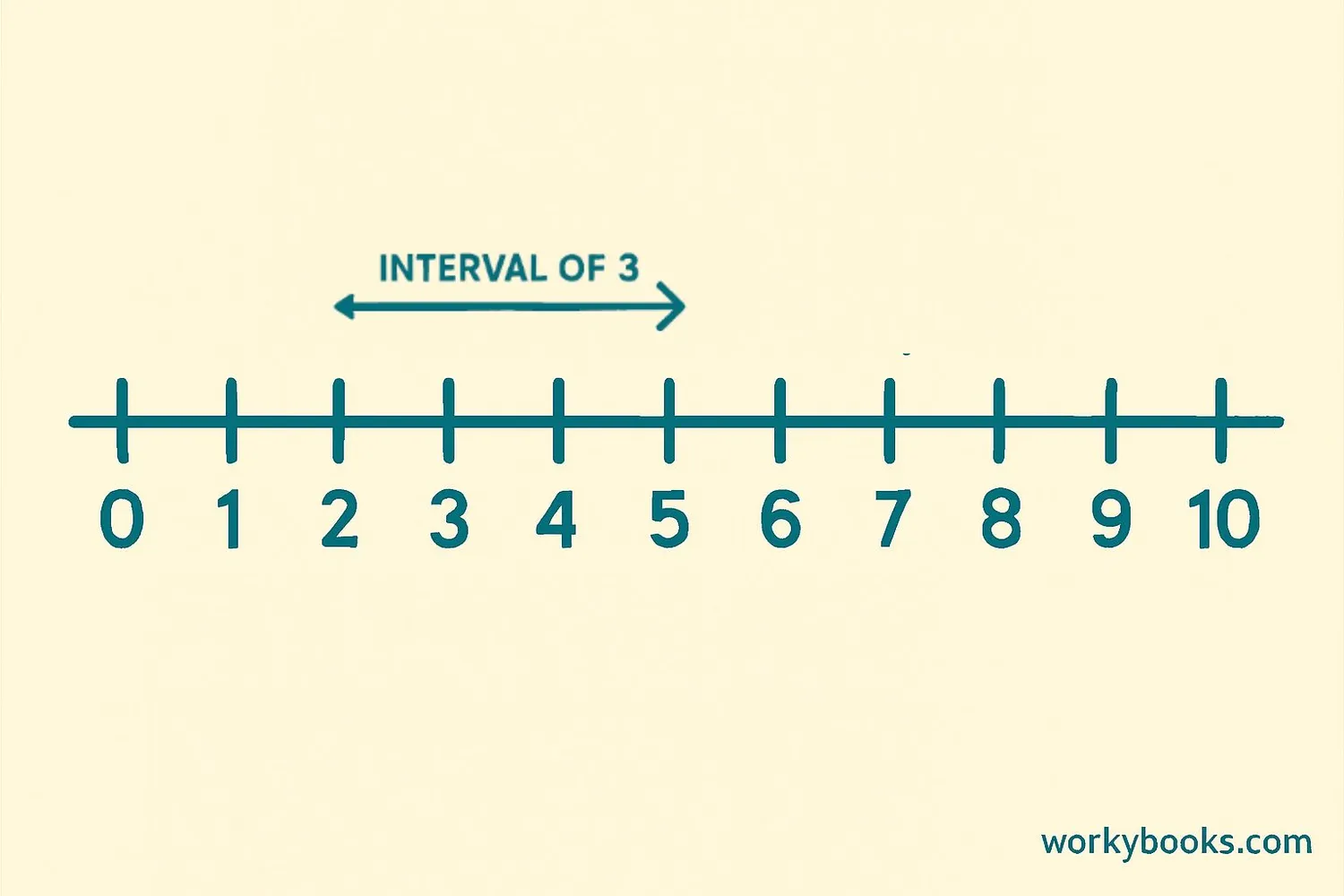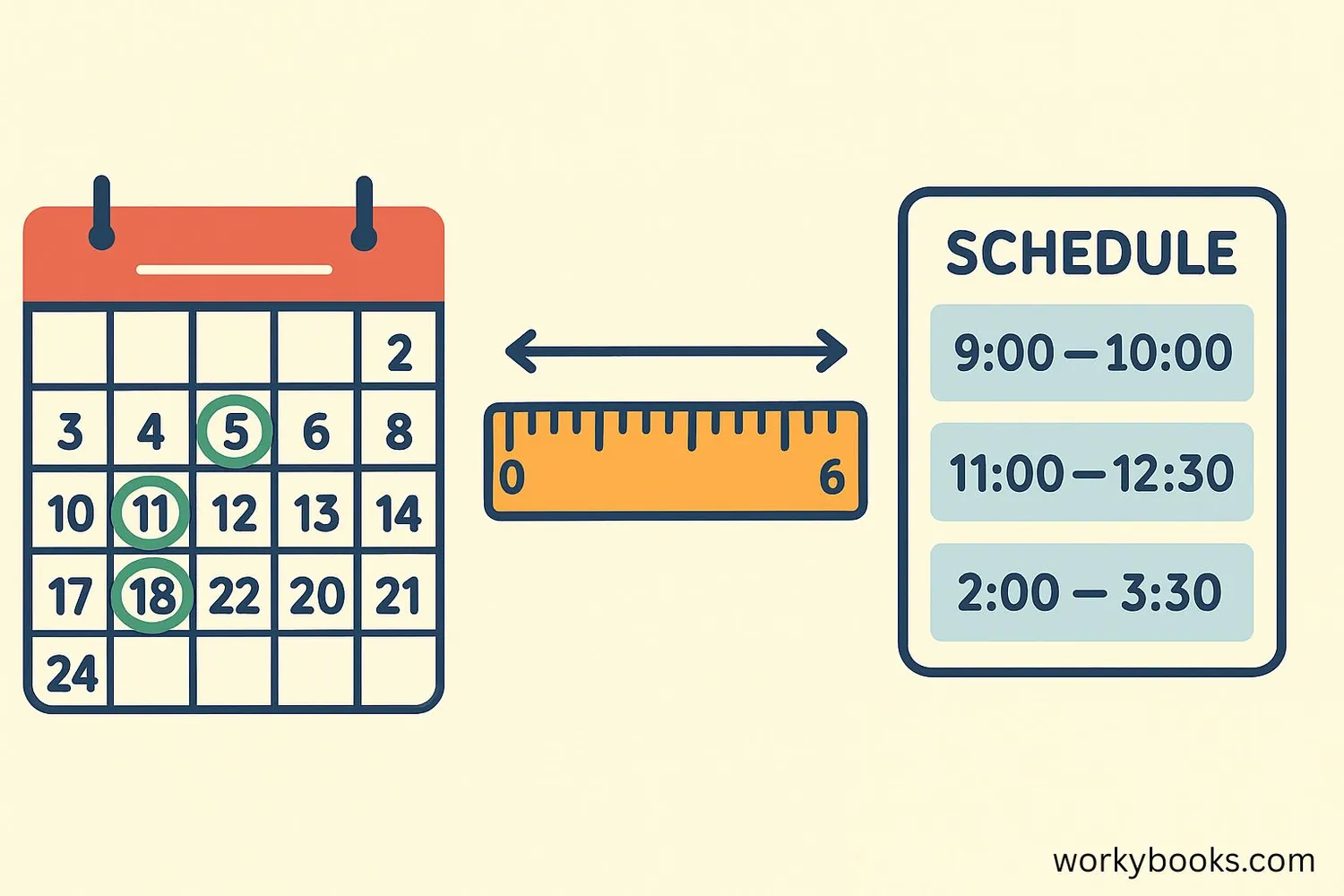Intervals - Definition, Examples, Quiz, FAQ, Trivia
Learn about time intervals and number intervals with easy explanations and practice activities
What is an Interval?

An interval is the space or distance between two points. In math, we use intervals to measure:
• Time intervals - how much time passes between events
• Number intervals - the distance between numbers on a number line
Think of an interval like the space between fence posts or the time between your favorite TV shows. Intervals help us understand and measure the world around us.
For example, if school starts at 8:00 AM and ends at 3:00 PM, the time interval is 7 hours. If you measure the distance between two trees that are 10 feet apart, the interval is 10 feet.
Key Concept
An interval is the amount of space or time between two points, events, or numbers.
Time Intervals

Time intervals measure how much time passes between two events. We use clocks and calendars to measure time intervals.
Time Interval Formula
To find a time interval, subtract the starting time from the ending time.
Example: If you start reading at 3:15 PM and finish at 4:30 PM, what is the time interval?
Step 1: Identify start and end times → Start: 3:15 PM, End: 4:30 PM
Step 2: Subtract the start time from end time → 4:30 - 3:15
Step 3: Calculate the difference → 1 hour and 15 minutes
So the time interval is 1 hour and 15 minutes. You can also think of it as 75 minutes.
Remember
When calculating time intervals, make sure to use the same units (all minutes or all hours) to make subtraction easier.
Number Intervals

Number intervals measure the distance between numbers on a number line. The interval between two numbers is simply the difference between them.
Number Interval Formula
To find the interval between two numbers, subtract the smaller number from the larger number.
Example: What is the interval between 7 and 12?
Step 1: Identify the larger and smaller numbers → Larger: 12, Smaller: 7
Step 2: Subtract the smaller from the larger → 12 - 7
Step 3: Calculate the difference → 5
So the interval between 7 and 12 is 5. On a number line, you would count 5 spaces from 7 to reach 12.
Equal Intervals on Number Lines
| Starting Number | Ending Number | Interval |
|---|---|---|
| 2 | 5 | 3 |
| 10 | 15 | 5 |
| 0 | 8 | 8 |
| 7 | 20 | 13 |
| 100 | 125 | 25 |
Pattern Tip
When numbers are equally spaced on a number line (like 2, 4, 6, 8), the interval between each pair is the same (2 in this case).
Real-World Examples

Let's look at some real-world examples of intervals:
Example 1: School Schedule
If math class starts at 9:15 AM and ends at 10:00 AM, the time interval is 45 minutes.
Example 2: Birthday Planning
If today is May 10 and your birthday is May 20, the time interval is 10 days.
Example 3: Sports Field
If the soccer goal is 10 yards from the penalty spot, the distance interval is 10 yards.
Example 4: Number Line
On a number line, the interval between 15 and 25 is 10.
Example 5: Music
In music, the interval between two notes is the difference in pitch between them.
Practice finding intervals in your daily life - how long between meals, how far between trees in your neighborhood, or the number of days until your next vacation!
Application Tip
Intervals help us plan our time, measure distances, and understand patterns in numbers.
Interval Practice Quiz
Test your understanding of intervals with this 5-question quiz. Choose the correct answer for each question.
Frequently Asked Questions
Here are answers to common questions about intervals:
Math Trivia
Discover interesting facts about intervals and measurement:
Ancient Timekeeping
The ancient Egyptians were among the first to divide the day into smaller intervals. They used sundials to track time and divided daylight into 12 hours, making the length of an hour vary with the seasons.
Heartbeat Intervals
Doctors measure the intervals between heartbeats to check heart health. A healthy heart has regular intervals between beats, while irregular intervals can indicate health issues.
Musical Intervals
In music, intervals are the difference in pitch between two notes. The familiar "do-re-mi" scale is made up of specific intervals that create the pleasing patterns we recognize in songs.
Astronomical Intervals
Astronomers use enormous intervals to measure space. The distance from Earth to the Sun is about 93 million miles, which is called an Astronomical Unit (AU). The distance to the next star is over 200,000 AU!





